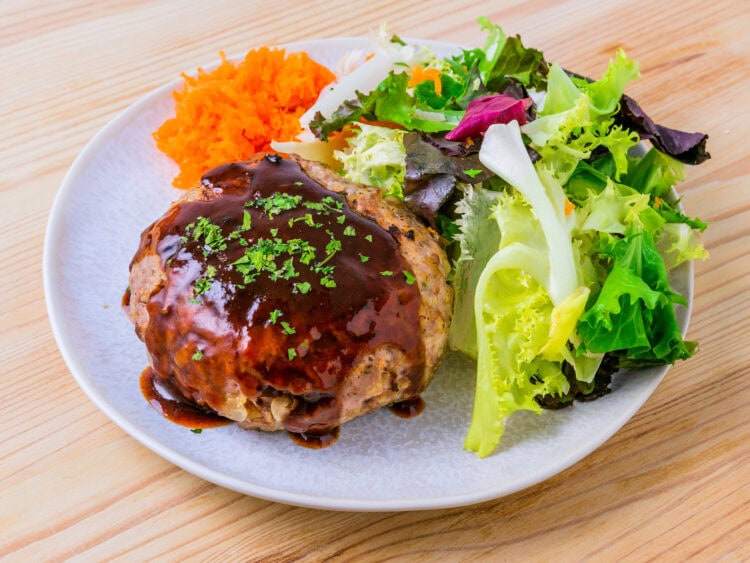Not quite a hamburger, almost a steak… rather a perfect in-between. This Japanese twist with red wine sauce and ketchup will delight the most indecisive fans of Japanese yoshoku cuisine!
The hamburger, that’s a little guilty pleasure we mostly attribute to American cuisine. We love it for its indulgent and rich nature. In Japan, it’s completely reinvented, but that doesn’t mean it loses any of its flavor. Here, the hamburger is stripped of its bun.
On the menu: juicy pork and beef patty garnished with minced onions, topped with a red wine sauce with powerful umami flavors… Curious recipe? Delicious, above all!
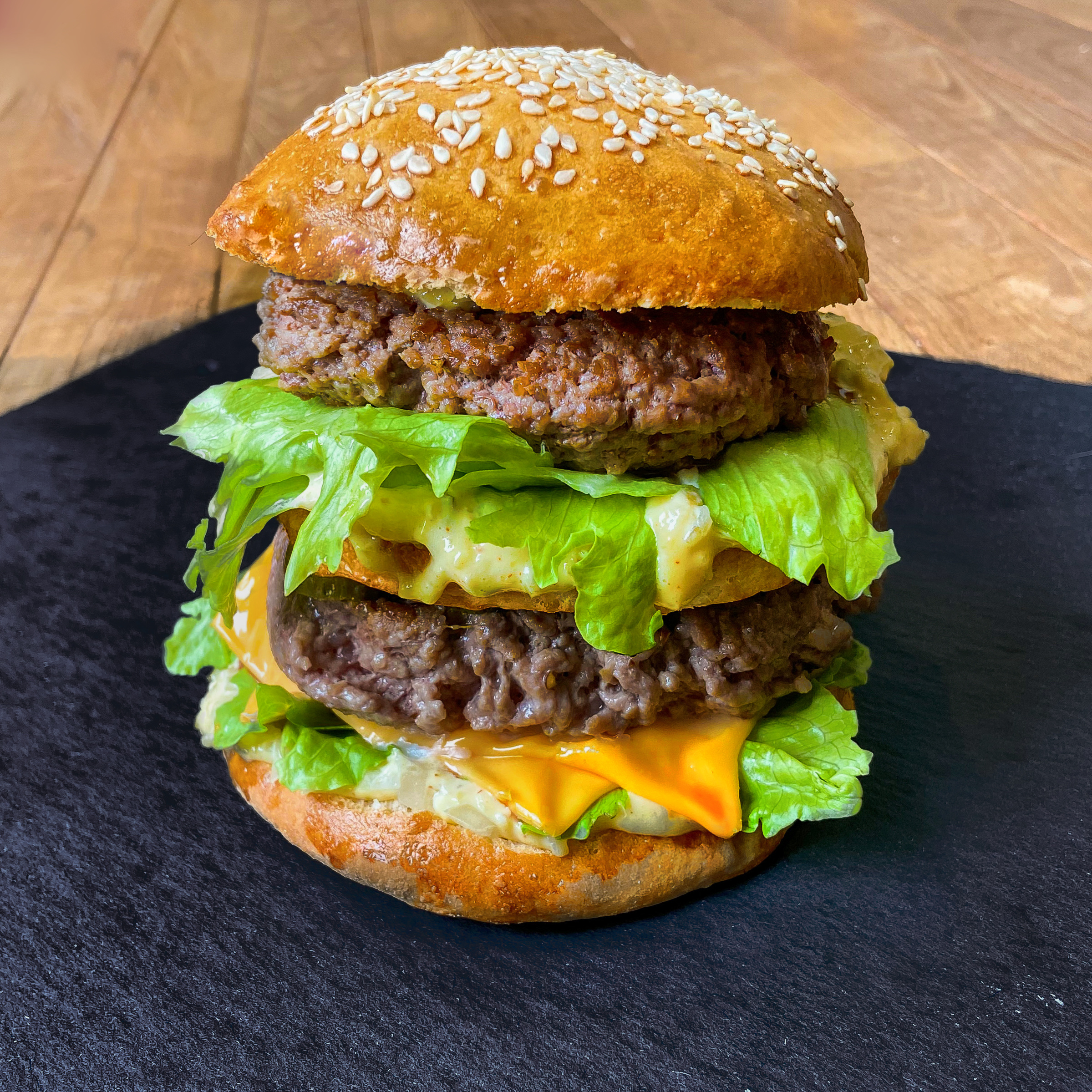
What is Hambāgu?
You could have guessed it yourself. “Hambāgu” sounds very much like “hamburger”. Except that unlike the idea we have of a hamburger with its traditional sesame seed bun, beef patty, slice of cheddar, and so on, “Hambāgu” (ハンバーグ) simply translates to “Japanese hamburger steak”.
You read that right, no bun in the equation. It’s usually served with rice instead. Makes it more Japanese, doesn’t it? You can just as well accompany it with sautéed vegetables, potatoes… Here, I personally chose to serve it with a garnished salad.
Hambāgu is actually a very popular dish from Yoshoku cuisine, a kind of Japanese cuisine that draws heavily from Western cuisine. Remember, this is also the case for Tonkatsu, Japanese potato salad or Omurice.
So it’s normal that some of these dishes seem strangely familiar to you despite everything. For those interested in English cuisine, some say that Hambāgu is a Japanese version of Salisbury Steak.
There are many variants of Hambāgu that include different sauces, such as Wafu Hambāgu (soy sauce and grated daikon) or Teriyaki Hambāgu (yes, like in teriyaki chicken!).
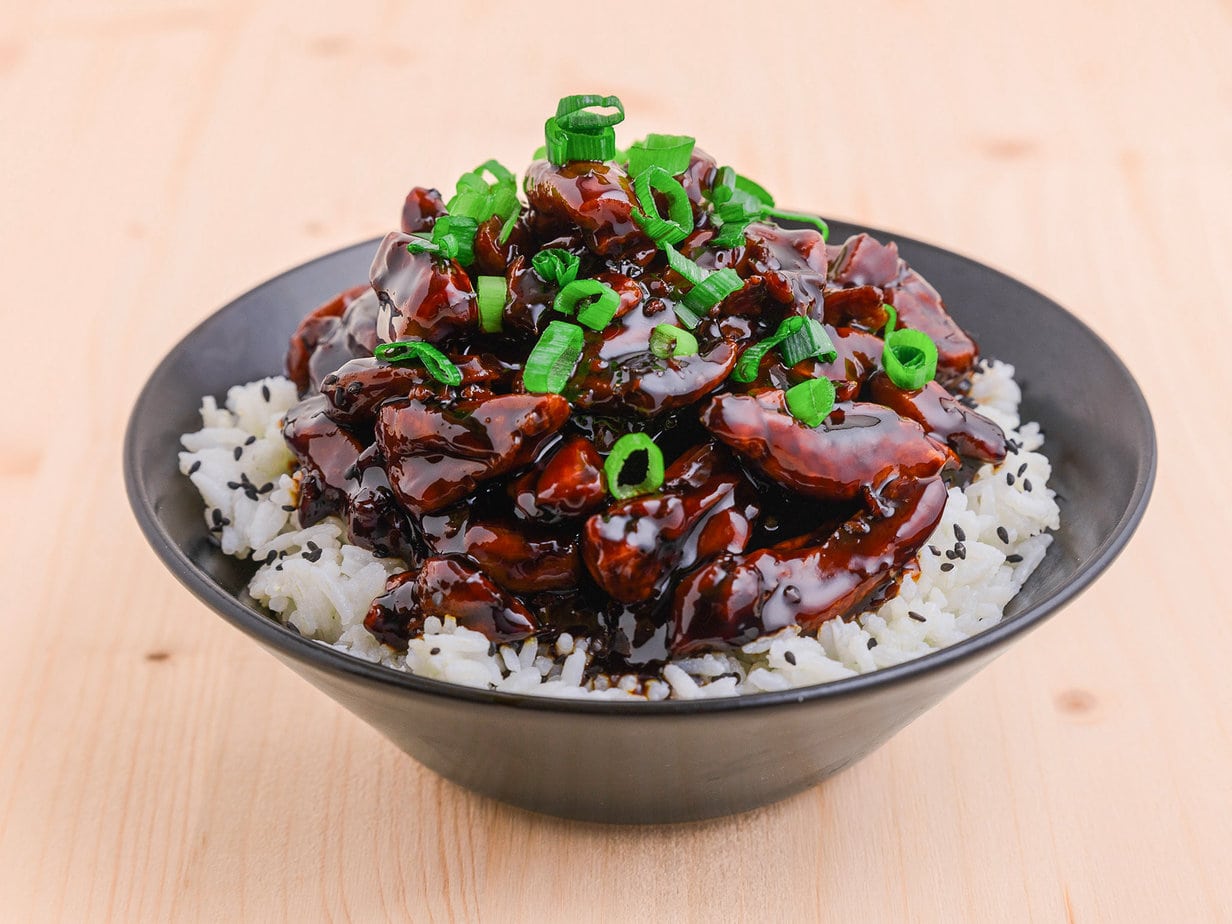
The toppings can also vary greatly, it’s not uncommon to accompany Hambāgu with sautéed shimeji mushrooms or a fried egg. However, as far as we’re concerned, the sauce we’re interested in today contains red wine and ketchup
What’s the Difference Between Hambāgu and Hambaga?
There are always little subtleties to know in Japanese cuisine, and this one particularly deserves to be noted. In Japan, there’s Hambāgu but also Hambaga.
Just one letter changes, and yet there’s a real difference between the two dishes. Hambāgu is not a hamburger in the strict sense. On the other hand, Hambaga clearly is, right down to the pronunciation.
Doesn’t it sound like a phonetic language version of the word “hamburger” with an American accent? In any case, Hambaga refers to the American-style hamburger. It’s considered a “foreign” dish for Japanese people, even if it can include typically Asian toppings, like shirasu (sardines) or breaded shrimp patties.
Where Does Hambāgu Come From?
Hambāgu itself is a dish that quickly spread around the world in the 1800s. It was initially an initiative of German immigrants. Even if it’s not typically Japanese, this recipe found its share of fans during the Meiji era (1868-1912), when Japan was looking for Western inspirations, a bit like nanban chicken
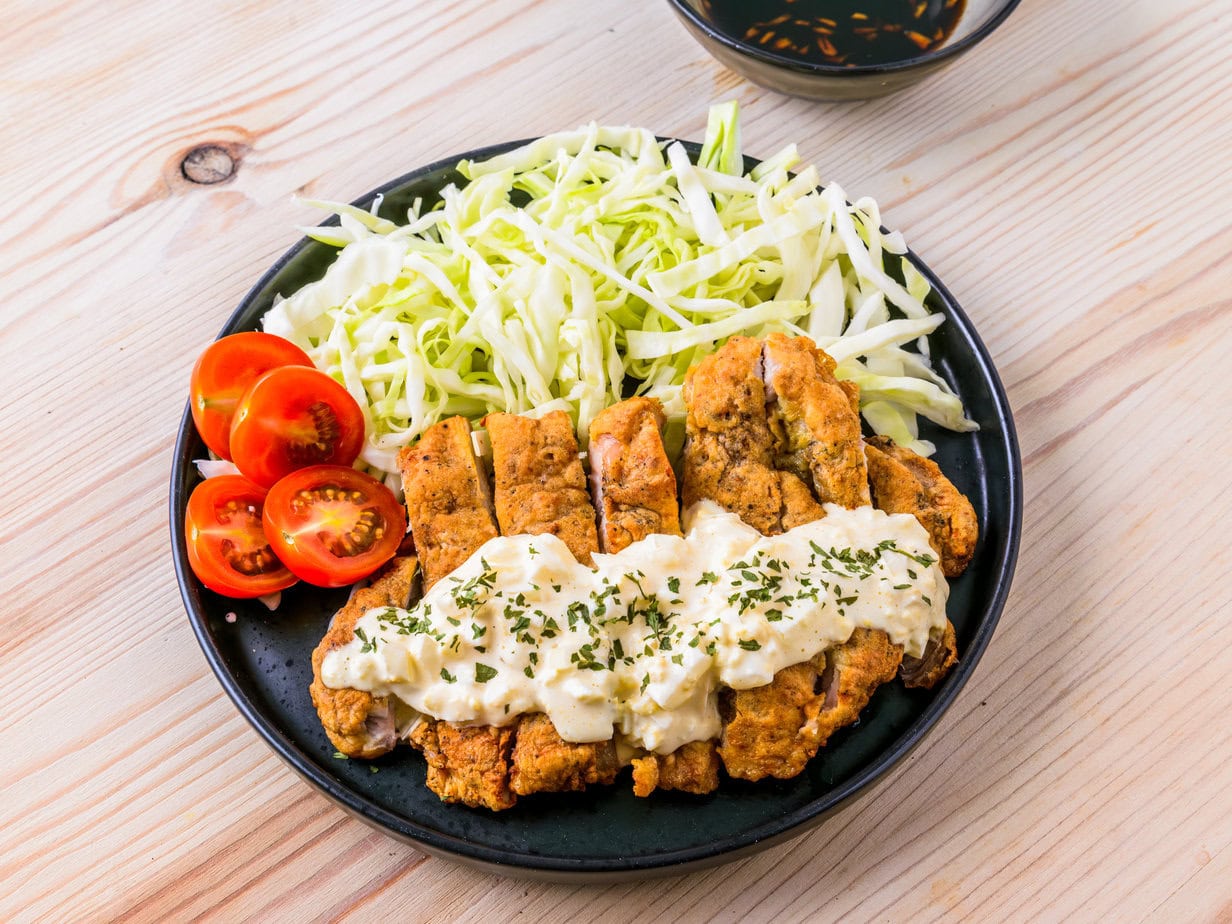
But then, how did Hambāgu become such a success? Historically, ground beef was consumed raw in some regions of Central Asia. Interesting anecdote: it was the Tatar horsemen who consumed it, which later inspired the famous steak tartare
. Needless to say, in Europe, it quickly became popular, even to this day.
Around the 18th century, it was finally the inhabitants of Hamburg who created this dish of minced meat, molded into a steak, grilled and drizzled with sauce. This is the Hamburg steak that German immigrants exported to America. To say a few words about the hamburger, its exact origin is unknown. It was something quick and easy to consume for workers that allowed them to eat a Hamburg steak on the go.
In Japan, it was actually forbidden to consume meat for several centuries. It was only during the Meiji period that this changed, when the Japanese began to model their diet on that of Westerners. For better or for worse.
Hamburg steaks then managed to find a place on the menus of Yoshoku restaurants of the time. Even though meat was scarce for a while, especially during World War II, Hamburg steak began to be popular again from the 1950s. At that point, people started to more commonly refer to it as Hambāgu.
The Main Ingredients of Hambāgu
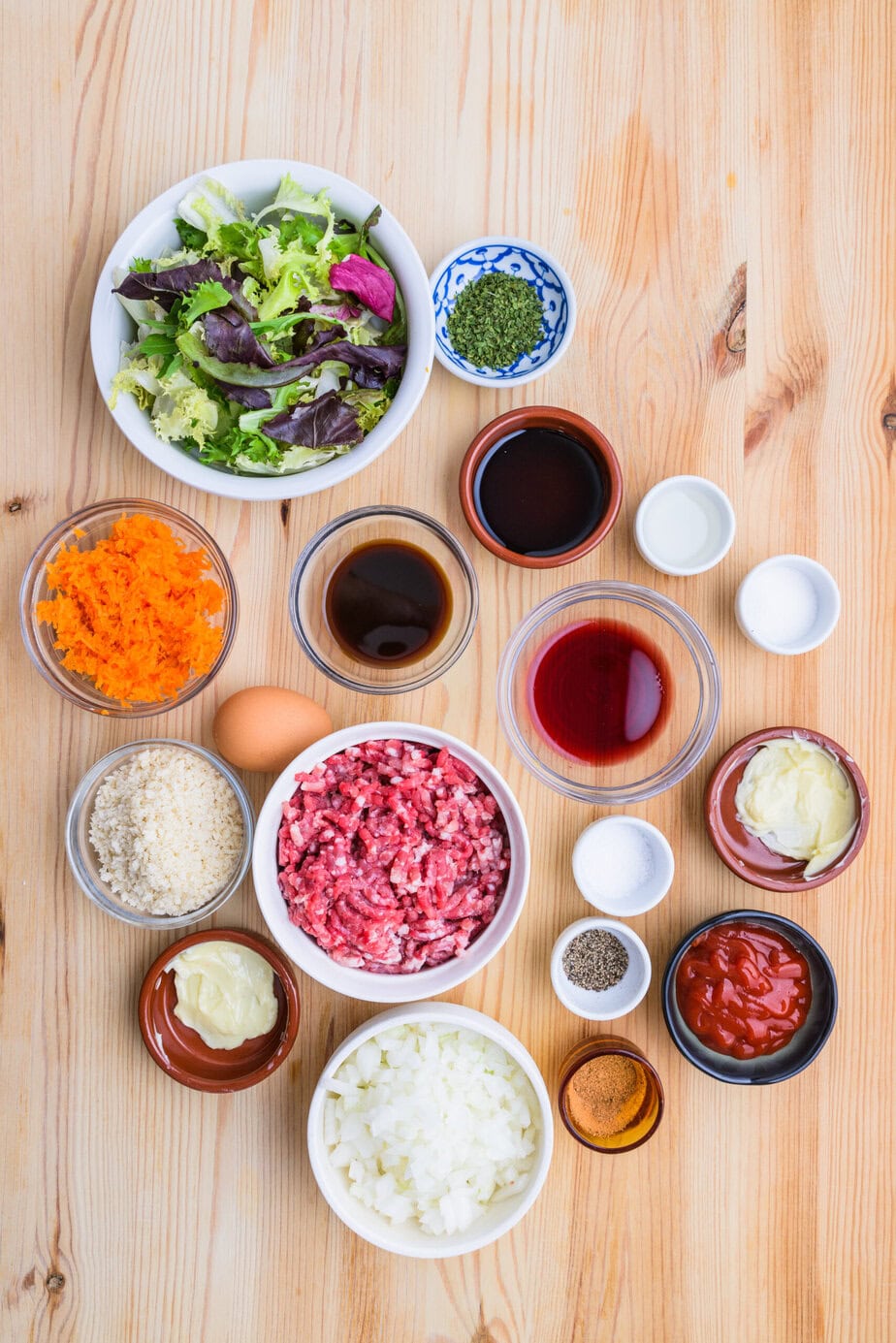
Beef and pork: in Japan, Hambāgu is generally prepared with a mixture of minced beef and pork. Some Japanese grocery stores even sell ready-to-use meat packs specially called Aibiki Niku (合いびき肉) so you don’t have to buy the two types of meat separately. In this recipe, we’ll make an exception, with a ratio of 130 grams of beef to 70 grams of pork.
Panko breadcrumbs: along with the egg, breadcrumbs make a good binder for meatballs or minced meat steaks. Panko is actually more suitable here as it’s lighter yet gives more crunchiness to the dish.
Red wine: here’s a little hint of acidity that makes Hambāgu much more interesting than it appears. It’s the sauce that does justice to this dish, and a full-bodied wine will give it its character.
Ketchup: can you imagine a burger without ketchup? It’s different here, you might say, but ketchup brings a significant sweet note to the sauce.
Worcestershire sauce: it’s also this that gives the Hambāgu sauce its dark brown color. Sweet and sour and slightly spicy, it’s somewhat similar to the Chuno sauce that some Hambāgu recipes use, but still a bit more flavorful. Although English, this sauce is used in many Japanese dishes such as the tonkatsu pork sauce
Light soy sauce: a touch of salt that balances everything without disturbing the flavors of the red wine, ketchup, and Worcestershire sauce. The flavors complement each other and that’s the whole strength of Hambāgu.
Tips for Successful Hambāgu
We want firm steaks that don’t fall apart during cooking, and that’s not always guaranteed even if we keep our fingers crossed. A little trick to maximize your chances: when forming the steaks, toss the meat mixture from your left hand to your right hand several times. Funny, but very practical.
This helps release the air inside the meat and limit cracks during cooking.
Also, I recommend letting the already formed steaks cool in the fridge for 20 to 30 minutes to solidify the fats. You’ll take them out just before cooking.
As for the sauce, make it in the same pan as the meat to deglaze all the juices. Guaranteed deliciousness!
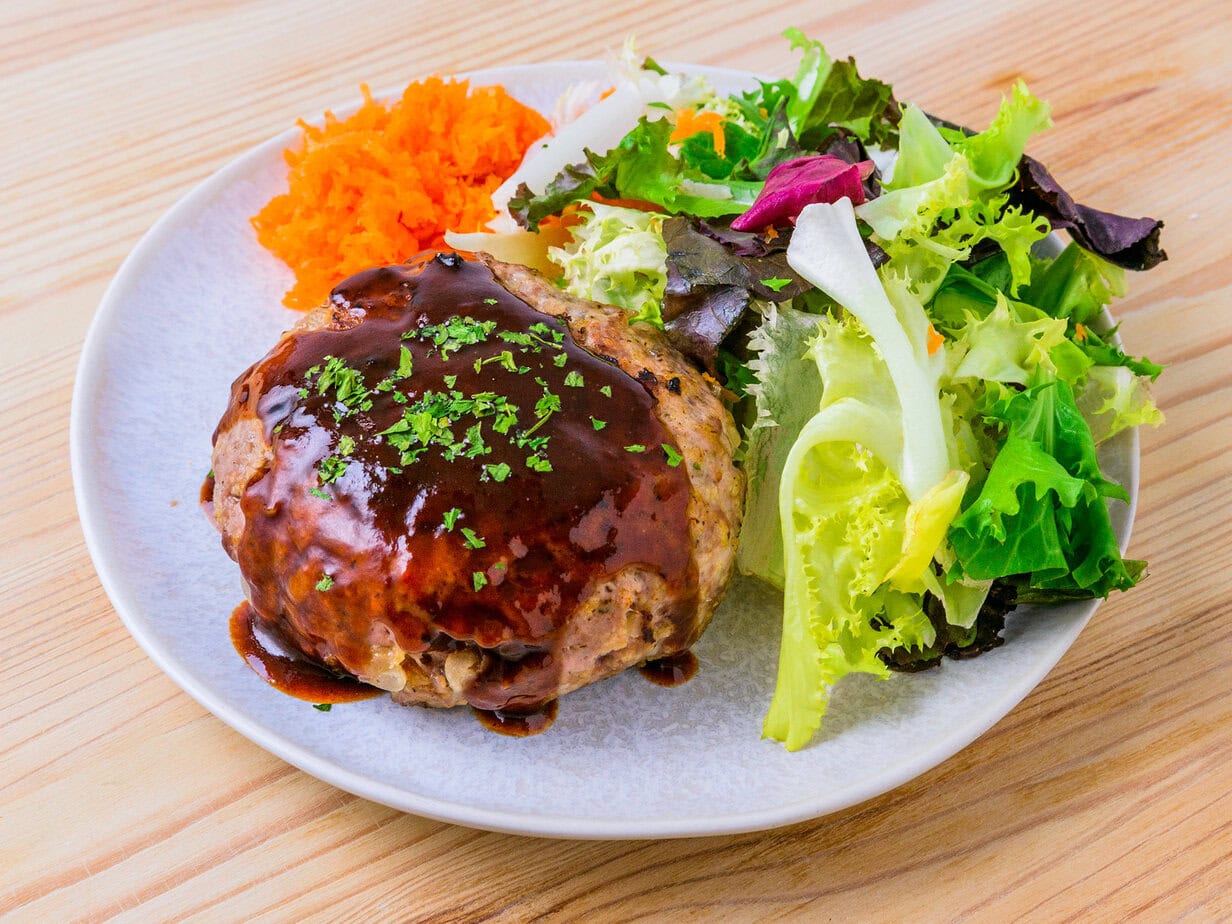
Hambagu – Japanese Hamburger Steak
Ingredients
For the meat
- 130 g of beef ground, use at least 15% fat content
- 70 g of pork ground, use a cut with at least 30% fat content like pork belly
- 100 g of onion very finely minced
- 10 g of butter salt
- 10 g of panko breadcrumbs
- 1 egg
- 0.5 teaspoon salt
- 0.5 teaspoon pepper
- 0.25 teaspoon of nutmeg powdered
For the hambagu sauce
- 3 tablespoons of red wine
- 3 tablespoons ketchup
- 3 tablespoons of Worcestershire sauce
- 1 teaspoon light soy sauce
- 1 teaspoon of sugar
- 10 g of butter salt
- 1 tablespoon neutral oil
For the side dish
- A bit of salad
- Grated carrots
For the garnish
- Dried parsley
Instructions
- Heat a pan over medium heat and melt the butter, add the onion and sauté until golden, then remove from heat and let cool100 g of onion, 10 g of butter
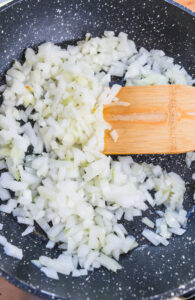
- Put the ground beef and pork in a bowl and mix well, add the panko, “egg, salt, pepper, and nutmeg, then mix until” you get a sticky texture130 g of beef, 70 g of pork, 10 g of panko breadcrumbs, 1 egg, 0.5 teaspoon salt, 0.5 teaspoon pepper, 0.25 teaspoon of nutmeg
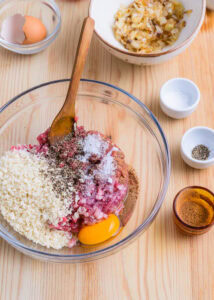
- Add the cooled onions to the meat and mix well
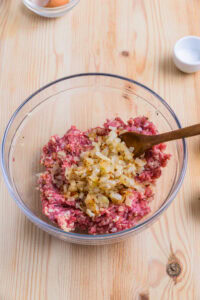
- Divide into equal portions and shape into oval patties
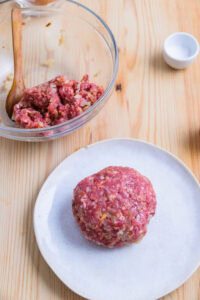
- Heat a pan over medium heat with oil, add the meat patties and brown them on both sides
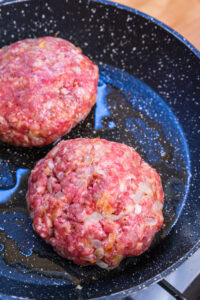
- Cover and cook on low heat for about 3 minutes until cooked through, then remove and set aside
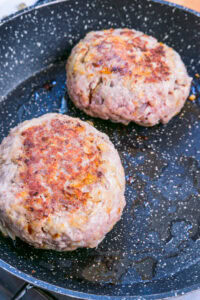
- In the same pan, add the sauce ingredients and mix, heat over medium heat for about 3 minutes until the sauce thickens, then remove from heat3 tablespoons of red wine, 3 tablespoons ketchup, 3 tablespoons of Worcestershire sauce, 1 teaspoon light soy sauce, 1 teaspoon of sugar, 10 g of butter, 1 tablespoon neutral oil
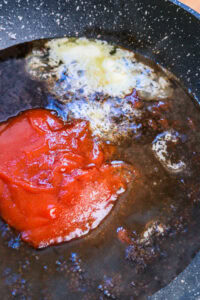
- Arrange the side dishes on a plate, place the meat patties, pour the sauce over them, and sprinkle with dried parsleyA bit of salad, Grated carrots, Dried parsley
